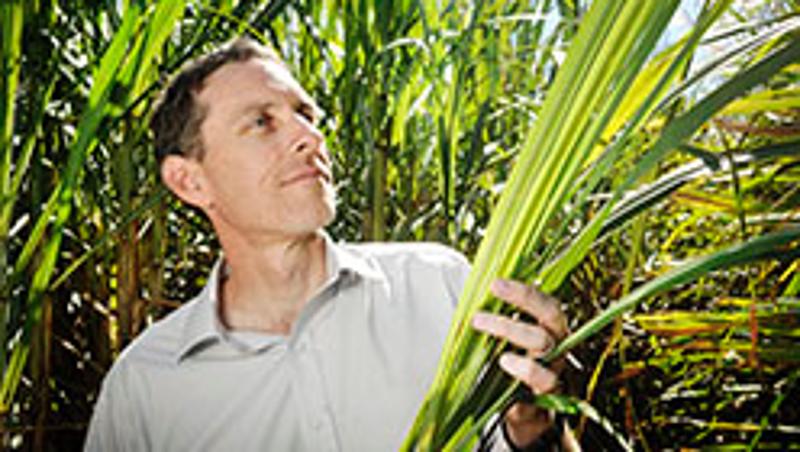
A new Australian-based research study into sweet sorghum has shown the huge potential of the crop as a single source of energy, food and animal feed.
Sweet sorghum is receiving significant global interest because of its potential as a multi-product crop, however there has been minimal research under Australian growing conditions or using Australian processing facilities, until now.
Sweet sorghum is a fast growing plant that produces a stalk up to five metres tall with a high concentration of fermentable sugars at a level similar to that of sugarcane, and produces a large panicle of edible, nutritional grain similar to that of grain sorghum. Unlike many other crops used for renewable energy production, sweet sorghum can simultaneously produce food and feed co-products.
Conducted by QUT in collaboration with industry partner AgriFuels Ltd, the research looked at sweet sorghum's agronomy, its ability to be processed using existing processing infrastructure, its carbon footprint, using it to produce biofuels, and its use in food products for humans, fish and livestock.
The project's lead researcher, Associate Professor Ian O'Hara said that sweet sorghum has a wide potential cropping area, including tropical and sub-tropical Queensland, the Northern Territory, Western Australia and in temperate regions of New South Wales, Victoria and Western Australia.
"Our research showed that several varieties of sweet sorghum grew very quickly in field trials, reaching maturity in only 16-20 weeks with fermentable sugar concentrations similar to those of sugarcane under optimal conditions," Associate Prof O'Hara said.
"Our research indicates there are significant short term opportunities for the co-location of sweet sorghum and sugarcane production to increase feedstock availability for bio-ethanol production. In fact, we found that adding sweet sorghum juice to sugarcane juice resulted in higher ethanol yields than fermenting sugarcane juice alone."
Professor O'Hara said the research team also produced a range of sweet sorghum food and feed products including sweet sorghum flour, syrup, sweet sorghum-based breakfast cereal, fish and animal feed pellets and human dietary fibre products.
"When we analysed the nutritional quality and economics of these products it was shown that there are significant opportunities for manufacturing food and feed products from sweet sorghum in Australia," Professor O'Hara said.
"These products include livestock feed from sweet sorghum grain, syrup or molasses feed supplements, stock feed from sweet sorghum bagasse, and the production of mixed animal and fish feed products incorporating all three residues."
Professor O'Hara said that a carbon footprint analysis of six biorefinery process options for the conversion of sweet sorghum to fuel and animal feed products under Australian conditions was also carried out and the results were positive.
"We conducted a life cycle assessment and it determined that the aggregated effects of all sweet sorghum biorefinery products resulted in a strong net reduction in Global Warming Potential. This was true even for scenarios with the lowest sweet sorghum crop yields, so sweet sorghum biorefineries can assist in reducing carbon emissions," he said.
Professor O'Hara said Australia is well placed to establish integrated biorefineries producing sweet sorghum-based products for domestic use and for export into the Asian market.
"Sweet sorghum is one crop that has significant potential to contribute to the development of Australia's bioeconomy. Further research and commercialisation activities will be required to help develop sweet sorghum potential for commercial cultivation and processing at a large scale in Australia," Professor O'Hara said.
The research project was funded by RIRDC and industry partner AgriFuels Ltd.
The complete research report titled 'Sweet sorghum - opportunities for a new, renewable fuel and food industry in Australia' can be found on the RIRDC website: https://rirdc.infoservices.com.au/items/13-087
This media release has been republished with the permission of the RIRDC.
Media contact: Damon Whittock, RIRDC Communications and Public Affairs Manager, ph. 02 6271 4175 or Rose Trapnell, QUT media team leader, 07 3138 2361 or 0407 585 901 rose.trapnell@qut.edu.au


